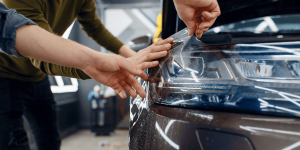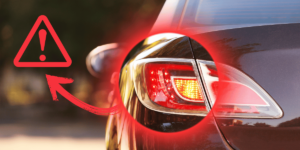You’re driving down the highway and enjoying the serene sound of your car’s engine when all of a sudden, the sound of a hole in your silencer interrupts your pleasant mood. In addition to being annoying, this can cause your car to use more gas and even damage it in some cases. Don’t worry, though. This complete guide will teach you how to fix a hole in your car’s silencer, which will save you money and trouble.
How to fix a silencer that has a hole in it?
It can be annoying when your silencer has a hole in it because it makes your car sound louder and worse. It can also be dangerous because exhaust fumes can get into the car. You should fix your silencer as soon as possible if it has a hole in it.
To fix a hole in a silencer, you can either weld it closed or patch it up. The longer-lasting answer is to weld, but you need special tools and skills to do it. Patching is a short-term fix that you can do yourself at home with common goods and tools.
In order to fix this common car problem, let’s start by going through the steps one by one.
1. Figuring out the problem
There’s something you need to know about before you can fix it. There are different sizes of muffler holes, and the way you fix them will depend on how bad the damage is. If your silencer has a hole in it, you may hear more noise, use more gas and smell exhaust fumes inside your car.
2. To patch a hole in your muffler, you will need:
- A wire brush
- Sandpaper
- A degreaser
- Muffler cement or epoxy putty
- A wire mesh patch
- Metal strapping
3. Put safety first
When you work on your car, safety should come first. Make sure you’re in a well-ventilated area, wear the right safety gear, and follow all the safety instructions that came with your tools.
4. Here is a step by step guide how to fix it
- Before you start fixing your car, let it cool down all the way.
- Clean the area around the hole with the wire brush.
- Sand the area with sandpaper to make it smooth.
- Use a cleaner to clean up the area.
- Fill in the hole with a lot of muffler cement or epoxy putty.
- Tape the wire mesh patch over the hole and make sure it stays in place.
- Around the patch, add more muffler cement or epoxy glue.
- Tighten the metal band around the patch so it stays in place.
- Do not drive your car until the fix is completely dry.
5. Patching Small Holes
You should use a muffler patch kit for holes that are less than an inch across. Do these things:
- Use a wire brush to clean the area around the hole.
- Put on the patch per the directions on the kit.
- Make sure it fits well, and let it dry before starting your car.
6. Welding Larger Holes
Welding might be needed for holes that are bigger. If you have never welded before, it’s best to talk to an expert. If you’re already familiar with the process, though, here’s a quick rundown:
- Use a wire brush to clean the area around the hole.
- Be sure to wear safety gear like gloves and eye protection.
- Weld the hole shut to make sure there is a strong watertight seal.
- Wait for the weld to cool down before lowering the car.
7. The finishing touches
Once the silencer is fixed, lower the car and start the engine to listen for any leaks or strange noises. If you need to, tighten all of the links. If you fix your silencer properly, your car should run quietly again and use less gas. If you have a hole in your muffler, it is important to get it fixed as soon as possible. You can either have it welded or patched, depending on your budget and needs.
Is a hole in an exhaust bad?
Yes, there are a few reasons why having a hole in your car’s exhaust system can be a problem:
- Noise: One of the most obvious affects of a hole in the exhaust is that it makes more noise. The louder, sometimes annoying sound made by the exhaust gases leaving through the hole can make driving less enjoyable and may even be against the law if it causes noise pollution.
- Less Power: Engine efficiency can drop if there are holes in the exhaust system. This happens because the hole stops the exhaust fumes from flowing properly, which makes the engine less efficient. You may notice less speed, slower acceleration, and worse gas mileage.
- More pollution: If there is a hole in the exhaust system, harmful gases like carbon monoxide can get into the passenger area and put people’s health at risk. Furthermore, it may lead to higher fumes, which add to pollution in the environment.
- Legal Issues: Depending on where you live, noise and pollution laws may make it illegal to drive with an exhaust system that doesn’t work. If this isn’t fixed right away, it could lead to fines or other punishments.
- Chance of More Damage: If you don’t fix a small hole right away, it can get bigger over time because of water, road salt, and other things in the surroundings. What starts out as a small problem can get worse and cost you more to fix in your exhaust system.
What is Exhaust Repair Tape? Will exhaust tape fix an exhaust leak?
Exhaust repair tape can be used to fix cracks and holes in mufflers and other exhaust parts. It can withstand high temperatures. It is usually made of a metal or fiberglass backing that is stuck on with silicone or acrylic. Exhaust repair tape is only meant to be used temporarily, but if it’s used properly, it can last for months or even years.
These steps will show you how to use exhaust repair tape to fix a exhaust leak:
- With a wire brush and cleaner, clean the area around the hole or crack.
- Cut an exhaust repair tape piece that is just a bit bigger than the crack or hole.
- To keep the tape from coming off, round the corners.
- With care, peel off the tape’s side and put it over the hole or crack.
- You can use your fingers to smooth out the tape and then press it deeply into place.
- To make a strong seal, wrap the tape around the muffler several times.
- Do not drive your car until the tape is totally dry.
Here are some tips on how to use exhaust repair tape correctly:
- Before you put the tape on, make sure the area around the crack or hole is clean and dry.
- Put down a smooth, even layer of tape.
- To make a strong seal, wrap the tape around the muffler several times.
- Do not put exhaust repair tape on cracks or holes that are very big.
- The tape might not last as long if the crack or hole is in a hot spot.
If you want to fix a hole in your muffler for good, you should have it fixed. However, exhaust repair tape can work as a short-term fix or if you don’t have access to welding tools.
Frequently Asked Questions (FAQs)
Q: What is the difference between welding and patching a hole in a muffler?
A: For good, welding the muffler’s metal back together is the only way to fix it. Patching is a short-term fix that covers the hole with a filler or glue.
Q: Which is better, welding or patching a hole in a muffler?
A: Welding is the better option if you are looking for a permanent solution. However, it requires specialized equipment and skills. Patching is a good option if you are looking for a temporary solution or if you do not have access to welding equipment.
Q: How long will a patched hole in a muffler last?
A: The lifespan of a patched hole in a muffler will vary depending on the size of the hole, the type of patch used, and the driving conditions. In general, a patched hole should last for several months or even years.
Q: Can I drive my car with a hole in the muffler?
A: If your car’s muffler has a hole in it, you shouldn’t drive it. If there is a hole in the muffler, exhaust fumes could get into the car and be dangerous. It’s also possible for a hole in the muffler to make your car sound louder and worse.
Q: Can I use a DIY patch kit for larger holes?
A: DIY patch kits are generally designed for small holes. For larger holes, it’s safer and more effective to consult a professional or consider welding.
Q: How much does it cost to repair a muffler hole professionally?
A: Costs vary based on location and the extent of damage, but professional repairs typically range from $100 to $400.
Q: Are there any temporary fixes for muffler holes?
A: While not recommended, you can use exhaust tape or epoxy as a temporary fix until proper repairs can be made.
Q: How to use muffler weld putty?
- Clean the area around the hole or crack with a wire brush and degreaser.
- Mix the putty according to the manufacturer’s instructions.
- Apply the putty to the hole or crack with your fingers or a putty knife.
- Smooth out the putty and press it firmly into place.
- Allow the putty to dry completely before driving your car.
Q: How long does it take for muffler weld putty to dry?
Most muffler weld putty products will dry within 24 hours. However, some products may require curing at a high temperature. If this is the case, follow the manufacturer’s instructions carefully.
Q: Can I use muffler weld putty on a large hole or crack?
A: It is not recommended to use muffler weld putty on large holes or cracks. Muffler weld putty is a temporary solution, and it may not be able to withstand the high temperatures and pressures of a large hole or crack.
Q: Can I use muffler weld putty on a hole or crack in a high-heat area?
A: Muffler weld putty is high-temperature resistant, but it may not last as long in a high-heat area. If the hole or crack is in a high-heat area, it is best to have it welded.
Q: What should I do if I get muffler weld putty on my skin or eyes?
A: If you get muffler weld putty on your skin, wash it off immediately with soap and water. If you get muffler weld putty in your eyes, flush them immediately with cold water and seek medical attention.
Q: How can I clean up spills or overspray of muffler weld putty?
A: To clean up spills or overspray of muffler weld putty, use a solvent such as acetone or toluene. Be sure to wear gloves and safety glasses when using solvents.
Conclusion
Lastly, fixing a hole in your car’s silencer is doable as long as you follow safety rules and use the right tools. Finding the problem, choosing the right way to fix it, and being careful are the most important things you can do to get your silencer working again. If you’re not sure about any step, don’t be afraid to ask for help to make sure your car is safe and running well.








